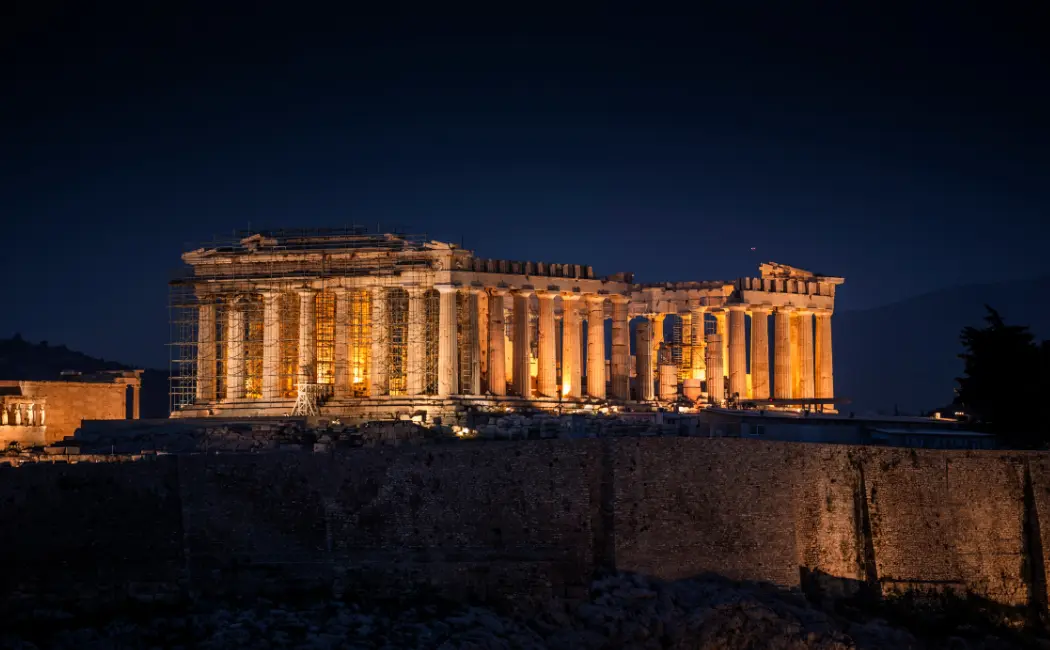The Pantheon, an iconic ancient Greek temple, stands as a testament to the ingenuity and artistic expression of the ancient Greeks.
Located in the heart of Athens, Greece, this majestic structure has captivated visitors for centuries, inspiring wonder and awe at its sheer scale, architectural precision, and historical significance.
History of the Pantheon
Commissioned by Pericles in 447 BCE, the Pantheon was built as a temple dedicated to all the gods of ancient Greece, replacing an earlier temple destroyed by the Persians.
The project was overseen by renowned architects Ictinus and Callicrates, with Phidias, the famous sculptor, responsible for the temple’s stunning decorations.
Architecture and Design
The Pantheon’s architecture revolutionized ancient Greek design:
- Doric Columns: Eight columns supporting the entablature, exemplifying Doric order.
- Pediment Sculptures: Intricate carvings depicting mythological scenes.
- Frieze: A 160-meter-long marble band adorned with sculptures.
- Domed Roof: The Pantheon’s iconic dome, constructed using 5,000 tons of Pentelic marble.
Innovative Engineering
The Pantheon’s construction showcased groundbreaking engineering:
- Load Distribution: The dome’s weight distributed evenly across columns.
- Drum and Dome: The temple’s cylindrical core supports the dome.
- Oculus: The 5.5-meter opening at the dome’s center allows natural light.
Cultural Significance
The Pantheon represents the pinnacle of ancient Greek culture:
- Philosophy: The temple’s design reflects philosophical ideals of harmony and balance.
- Artistry: The Pantheon’s sculptures and decorations epitomize Greek artistic excellence.
- Spirituality: The temple served as a sacred space for worship and offerings.
Historical Events
The Pantheon witnessed significant historical events:
- Athenian Empire: The temple symbolized Athens’ power and influence.
- Roman Occupation: The Pantheon was converted into a Roman temple.
- Byzantine Era: The temple became a Christian church.
Conservation Efforts
In the 20th century, the Pantheon faced significant threats:
- Pollution: Air pollution damaged the marble.
- Neglect: Lack of maintenance and preservation.
- Earthquakes: Structural damage from seismic activity.
International conservation efforts, led by UNESCO, have helped restore and protect the site.
Tourism and Economic Impact
The Pantheon attracts over 4 million visitors annually, generating significant revenue for Greece’s economy.
Challenges and Concerns
- Over-Tourism: Strains on infrastructure and potential damage.
- Climate Change: Rising temperatures and humidity threaten the temple’s structural integrity.
- Preservation: Balancing conservation with tourism and economic development.
Interesting Facts
- Perfect Proportions: The Pantheon’s design adheres to the golden ratio.
- No Windows: The temple relies on the oculus for natural light.
- Ancient Construction: Built without mortar or cement.
Conclusion
The Pantheon stands as an enduring testament to ancient Greek ingenuity, artistic expression, and cultural significance.
This iconic temple continues to captivate visitors, inspiring wonder and appreciation for the beauty and historical importance of ancient Greece.
References:
- UNESCO World Heritage Centre
- Greek Ministry of Culture
- Pantheon official website
- “The Pantheon” by Mary Beard
- “Ancient Greece: An Archaeological History” by Jeremy McInerney
Additional Resources:
- Pantheon Visitor Guide
- History of Ancient Greece
- Greek Architecture and Engineering
- Conservation Efforts and Sustainability
- Travel Tips and Accommodations











[…] You May Also Like: The Pantheon of Greece: A Temple of the Gods and a Marvel of Engineering […]